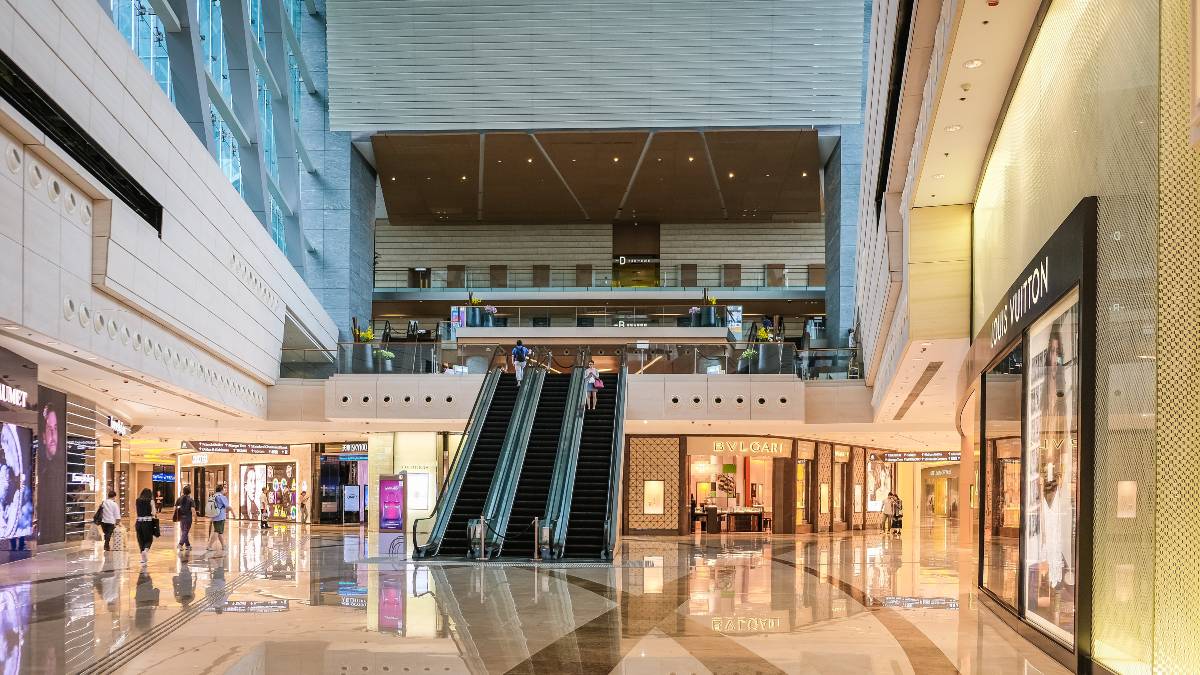As a commercial real estate expert with over 18 years of experience, I’ve witnessed firsthand the retail industry’s enormous transformation. Today’s consumers increasingly prioritize memorable experiences over material goods. In turn, traditional retail centers must evolve to deliver vibrant entertainment alongside shopping and dining options.
Integrating entertainment is no simple feat, however. It requires mitigating numerous risks and overcoming various hurdles. But savvy CRE investors and landlords determined to thrive want to know more about Retail To Entertainment Real Estate. Here I’ll explore this evolution and equip you with best practices for gaining an edge.
Key Takeaways
- Consumer preferences are rapidly shifting towards prioritizing experiences over products, driving demand for entertainment-focused retail properties.
- Landlords can overcome challenges in retail-to-entertainment transitions by carefully assessing risks, managing costs, and navigating uncertainty.
- Entertainment concepts allow landlords to develop vibrant, mixed-use properties that attract foot traffic and deliver strong ROIs long-term.
Table of Contents
Understanding the Shift in Consumer Preferences
Today consumers favor share-worthy experiences and Instagrammable moments over stuff. In kind, stale brick-and-mortar retail must make way for eclectic entertainment concepts allowing shoppers to play and engage. Landlords must reimagine properties as dynamic playgrounds drawing loyal crowds.
Specifically, eatertainment (combining dining and entertainment), virtual reality, and competitive socializing (games and activities alongside food/drinks) show particular promise. As consumers flock to these draws, their wallets open accordingly. Q4 2023 spending on dining out and arcades surged 13.7% and 20.6% year-over-year.
Landlords must capitalize on consumers’ hunger for entertainment. But first, several obstacles must be addressed.
Overcoming Challenges in the Retail to Entertainment Real Estate Transition
While promising immense potential rewards, pivoting retail sites into entertainment meccas has its fair share of growing pains. Careful planning and mitigation of risks is critical from the outset.
Of course, entertainment build-outs require major upfront capital – often upwards of $400 per square foot in tenant improvements. Banks remain conservative following the retail apocalypse, making financing tricky to secure on favorable terms. Revenue uncertainty further discourages lenders. And if executed poorly, disappointing foot traffic can sink entertainment plays fast.
Additionally, long-term leases locking in strong returns are no longer guaranteed. Increasingly, entertainment tenants push for 3-year terms, allowing earlier exit opportunities but sacrificing landlords’ income stability.
By benchmarking costs, stress testing business plans, and quantifying demand before breaking ground, landlords can reduce top entertainment spaces. Plus, tactically balancing long and short lease options satisfies patrons and owners alike.
Adapting Commercial Properties for Mixed-Use Entertainment
Once risks are addressed, exploiting consumers’ shifting preferences through real estate property redevelopment unlocks major opportunities. Blending retail stores like shopping with dining, competitive games, attractions and more within thoughtfully designed entertainment districts packs a serious punch.
Mixed-use properties with vibrant social draws attract consistent visitors – and their wallets. Whether modernizing traditional malls or reimagining vacant big box stores, introducing entertainment into retail centers makes spaces stickier and more profitable. Diversifying onto rising experiential formats hedges against further retail disruption.
Just look at New Jersey’s American Dream mall. After stalled construction, Triple Five Group transformed the languishing property into an unparalleled destination blending entertainment like ice rinks and water parks with familiar retail. Soon attracting massive crowds, the American Dream exemplifies entertainment’s radical retail rejuvenation power.
Attracting and Retaining Tenants in Entertainment Properties
Today’s consumers want fun and convenience under one roof. Identifying investors excited to deliver differentiated entertainment is therefore pivotal. With comparing online, brick-and-mortar must give patrons concrete reasons to make the trip. Amusement delivers, driving enthused visitors ready to spend.
Once secured, keeping entertainment tenants depends on crafting leases benefiting both parties. Landlords must support costly build-outs through appropriate tenant improvement contributions while also guaranteeing sufficient income stability from longer-term agreements.
Optimizing lease lengths and rents to balance risk encourages patronage and profitability. Plus, as patrons flock to lively properties, traditional retail tenants witnessing declining sales turn to entertainment landlords to regain foot traffic. Soon landlords dictate favorable terms in hot mixed-use properties.
Opportunities for Landlords in the Entertainment Space
Integrating entertainment into retail centers provides myriad upsides beyond stabilizing assets against e-commerce disruption. Entertainment reliably drives foot traffic while unlocking underutilized space’s potential. Soon landlords create vibrant, flourishing revenue engines through creative property reinvention.
With consumers comparison shopping online, traditional stores must give guests tangible reasons to make the trip. Entertainment offers exactly that – from modern gaming lounges encouraging repeat visits to chef-driven restaurants serving crave-worthy dishes. Stores surrounded by these draws win more wallets.
Additionally, dull spaces failing to generate landlord income present prime entertainment redevelopment opportunities. Converting unused floors of aging malls into amusement parks or escape rooms breathes new life into lackluster properties. Soon, vibrant visitor hubs stimulate both landlord incomes and surrounding property values.
![Retail To Entertainment Real Estate [For Business Owners] 1 Retail To Entertainment Real Estate](https://toljcommercial.com/wp-content/uploads/Retail-To-Entertainment-Real-Estate-2.jpg)
Developing Vibrant Entertainment Destinations in Urban Areas
While introducing entertainment empirically resuscitates stale retail properties, some market conditions amplify success. Visitors consistently flock towards concentrated urban entertainment epicenters boasting critical mass.
Although internet shopping threatens traditional suburban retail, metropolitan areas bursting with residents hungry for amusement after work present vibrant entertainment development justustial. Just look at New York’s new billion-dollar Pier 57 creative hub slated to house Google offices alongside cooking classes and concerts.
Urban build-outs allow conveniently capturing commerce from young, mobile populations through chef-driven concepts and competitive games drawing weeknight and weekend crowds. Concentrated development also encourages visitor cross-pollination between proximate attractions like bowling alleys, ar,ades, bars, and stores.
Exploring Entertainment Potential in Other Property Types
While retail historically housed the lion’s share of bricks-and-mortar entertainment, sectors like residential and industrial real estate also present untapped potential.
Multifamily landlords increasingly incorporate gaming lounges and golf simulators to woo renters, especially affluent young profRepurposingrepurposing old industrial warehouses as paintball arenas or concert venues unlocks profits from properties otherwisthe e lacking the highest and best use.
Savvy owners should analyze asset portfolios to pinpoint spaces ripe for entertainment development. Many older properties requiring minor conversion could host pop-ups or temporary activations before more permanent entertainment infrastructure gets built. Quick wins today pave the way for more ambitious investments tomorrow.
Best Practices for Profitable Entertainment Real Estate Investments
Despite its immense promise, barriers to profitable entertainment real estate investing abound. Careful due diligence, number crunching structure are critical.
First, estimate demand and revenue potential for entertainment offelocationc ationsmarkerts. Tools evaluating search trends and monitoring social conversations quantify interest helping size venues and calibrate rents.
Next, build detailed financial models determining required investments, projected returns, ideal leases, structures and breakeven are givens given locality-specific market conditions. Stress test assumptions to avoid optimistic projections skewing decisions.
Finally, structure flexible leases allowing periodic renegotiation should actual performance deviate from expectations. Startups may exchange near-term rate reductions for longer commitments should concepts succeed, for instance.
Of course, securing patient, risk-tolerant capital and industry partnerships can further derisk pricey entertainment developments. Assembling the right team illuminates blindspots while unlocking access to specialized resources.
The Future Belongs to Entertainment
Consumers today prioritize memorable, shareable moments with friends above stuff – even the latest flashy products. Catering to this preference shift through vibrant entertainment integration represents traditional retail’s single bright spot amid the ongoing apocalypse.
While barriers like financing and risk management must be addressed, entertainment unlocks immense value. Soon stale properties transform into flourishing community staples delivering landlords reliable income for ddes on. I urge you to evaluate your asset base for entertainment potential today – sizable rewards await those moving swiftly to capitalize on consumers’ shifting preferences.
Now I’m curious – what opportunities or obstacles do you see on the path towards an experience and entertainment-driven retail future? I welcome your perspectives as we collectively navigate this industry transformation. Please share any thoughts below!
![Retail To Entertainment Real Estate [For Business Owners] 2 Retail To Entertainment Real Estate](https://toljcommercial.com/wp-content/uploads/Retail-To-Entertainment-Real-Estate-.jpg)
FAQs
How can commercial real estate investors capitalize on growing demand for entertainment properties?
Investors should continuously analyze portfolios identifying spaces ripe for cost-effective entertainment integration. Standalone developments or pop-ups gauging interest often precede more permanent infrastructure once concepts prove viability.
the What are benefits of integrating entertainment spaces into traditional retail?
Entertainment drives consistent foot traffic to rejuvenate declining properties. Visitors patronize surrounding retail and dining. Landlords can also repurpose underutilized space and unlock marooned value trapped within poorly trafficked properties.
What strategies help ensure the profitability of entertainment-focused commercial real estate?
Conducting rigorous demand analysis, financial modeling, risk quantification, and stress testing before breaking ground enable appropriate venue sizing and calibrated lease terms. Securing patient capital and flexible leases offering periodic performance-based renegotiation also helps de-risk the upside.
How does adding entertainment impact foot traffic at brick-and-mortar retail?
Unique entertainment like gaming lounges, competitive socializing, chef-driven dining, concerts, and classes give consumers concrete reasons to make the trip, driving more visitors to stores. Retailers witness sales lift from surrounding entertainment traffic.
What factors determine optimal lease terms for entertainment property tenants?
Tenant creditworthiness, localized demand trends, venue construction costs, investment time horizons, expected consumer visit frequency, and shareholders’ required returns help landlords strike ideal entertainment lease lengths and rents. Shorter terms enable flexibility while longer agreements guarantee stability.
What are the main types of commercial real estate?
The main types of commercial real estate include retail space, office space, and industrial real estate. These properties are used primarily for business purposes.
How does the evolution of retail real estate impact the commercial and residential real estate industry?
The changing landscape of retail real estate can have a ripple effect on the commercial and residential real estate industry, as it may influence the demand for different types of commercial properties and the development of mixed-use spaces that incorporate both commercial and residential elements.
Conclusion
I applaud your commitment to better understanding today’s rapidly changing retail real estate landscape. Please feel free to schedule a consultation if you have any other questions regarding entertainment integration or want to discuss opportunities within your property portfolio specifically. I look forward to partnering on your real estate goals as the industry continues evolving in exciting new directions!




